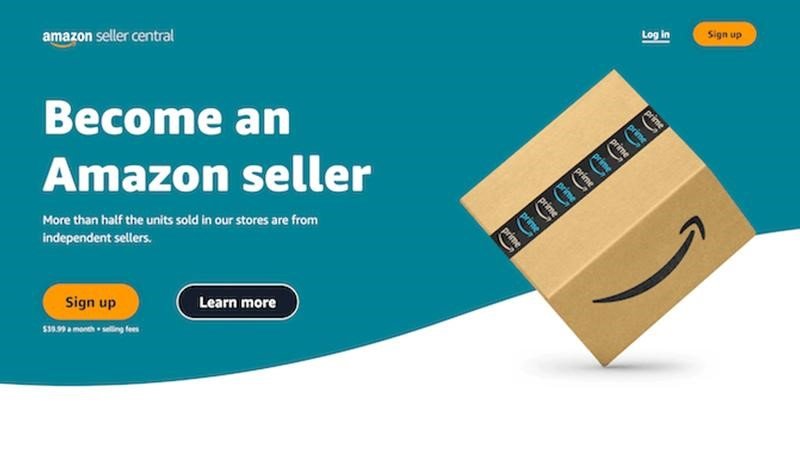Whether you’re a new Amazon seller or considering starting a business on this platform, you’ve probably heard the term “Amazon FBA”. You probably want to know everything about it and how it works in practice. If so, you’ve come to the right place!
Amazon is a famous eCommerce giant, and more and more people are tempted to use its power and the opportunities it offers to start their own companies. By introducing the FBA program, the eCommerce giant has made it possible for sellers to run an online store without even touching the products.
FBA stands for “Fulfillment by Amazon”. It’s a fulfillment method where Amazon takes care of picking, packing, and shipping your products. They even handle customer service after your products are delivered to the buyers. Follow this article to find out how to start your own online store on Amazon using this fulfillment method.
Table of Contents
What is Amazon FBA Business?
So, what is Amazon FBA Business? The famous acronym FBA stands for Fulfillment by Amazon. It refers to the eCommerce giant’s helpful logistics system that it offers sellers. Sellers who choose the FBA fulfillment method can shift their focus from all the hassle (like packing, shipping, dealing with customer service, etc.). Subsequently, they can focus on marketing and optimizing their listings.
So, Amazon offers its massive customer base and website for you to start a business, advertise for it and sell products quickly. It also provides the possibility to free you of all the logistics.
The function of Amazon FBA is simple; the sellers send their products to a large warehouse or fulfillment center. There, the products get packed, labeled, and prepared for shipment, which is immediately executed when the sale of that item occurs on the portal.
This is the reason why Amazon’s shipping times are so short. With Amazon FBA, the product is already in the hands of Amazon when you buy it. So, to sum it up, Amazon FBA is a storage and distribution service that Amazon offers to sellers on its platform in exchange for a fee and sales commission for each product.
What Are the Requirements for Starting an Amazon FBA Business?
A seller account is the first and foremost requirement for starting an Amazon FBA business. Make sure you create and verify your account before starting out. Here’s a list of required documents for signing up as a seller on Amazon:
- Business information – your business name, address, and contact info
- Email address and phone number
- An internationally chargeable credit card with a valid billing address
- Tax ID
- A form of identification (passport number or driver’s license)
Next, ensure your inventory adheres to Amazon’s product restriction guidelines. For example, you cannot sell alcohol and non-alcoholic beer through Amazon FBA. The last requirement for starting an Amazon FBA business is the manufacturer’s barcode or an Amazon barcode that should be visible on the product’s packaging.

What Laptop Configs Do I Need for Starting My Own Amazon Business?
None! All you need to start an Amazon FBA business is a functional laptop/PC with a browser like Google Chrome, Safari, or any other browser you’re comfortable with. You’re good to go if you can open the Amazon website on your laptop/PC!
Of course, some recommended tools and services can help you find profitable products and optimize your listings, but they are not required.
Is Amazon FBA Still Profitable in 2023?
Yes! despite what some might say, Amazon FBA is an excellent opportunity for those who want to start their own online store. There are a few reasons for this: Amazon is the dominant eCommerce platform, offering businesses a lot of potential for growth and scaling up.
Second, Amazon keeps adding new and innovative features to the FBA program, so there’s always something new to learn about this business model. Lastly, starting an Amazon FBA business is relatively low-cost and low-risk. It’s an excellent opportunity for those who want to start their own business without spending much.
How to Start Doing Amazon FBA Business?
Amazon’s FBA system has made trading easier for thousands of sellers. This is because they put all the technological and logistics infrastructure in place to provide unbeatable customer service.
Here’s how you can start your own Amazon business with the FBA program:
Step 1: Create a Seller Central Account
The first thing you should do is register as an Amazon seller. You can do this by going to https://services.amazon.com and choosing the Individual or Professional selling plan. The Individual plan is good if you don’t want to sell more than 40 products a month and see this as a hobby rather than a primary source of income. However, suppose you’re serious about your Amazon business. In that case, you must choose the Professional plan, which requires a monthly payment of $39.99 and allows you to sell as many items as you want.
The Professional plan is also necessary if you plan on getting ungated in restricted categories and brands.

Step 2. Source Products and Create Product Listings
Once you have entered all your tax information, bank account, personal info, etc., you can start selling on Amazon. To do this, you need to find profitable deals and products. Online arbitrage (buying discounted products and reselling them at a higher price) is a powerful business model for selling on Amazon, especially when coupled with the FBA program. To do online arbitrage, you must look for profitable deals in online retail stores such as Walmart, Target, etc.
After sourcing the products, you must create listings for them. Provide all the specifications related to the products: measurements, weight, images, and final sale price. You must also conduct thorough keyword research and use related keywords to your products in the description.
Step 3. Send Products to Amazon
There are hundreds of Amazon warehouses in Europe, the USA, and Canada to which you can send your products. This decision will be based on the location you sell. They usually assign the closest fulfillment center to your business address.
Step 4. Amazon Takes Care of Packing and Labeling the Products
Once Amazon receives your products, they take care of labeling, packing, and adding them to the “Available Inventory” of your sales control panel. The products will remain in Amazon’s warehouses (for a fee) until customers buy them.
Step 5. Customers Buy your Products, and Amazon Ships Them
Amazon takes care of the whole selling process. They verify payment and update your inventory automatically.
When one of your items gets sold, Amazon employees grab your package from the warehouse shelves and prepare it to be sent to the customer. You will not have to do anything at all.
Amazon even handles customer service after the product is delivered. They track the shipment and make sure everything has been done correctly. They also offer a return period and ask for feedback or review (which plays a determining role) on the product in question.
Step 6. You Receive the Money
Every two weeks, Amazon makes a total count of your sales. They subtract the corresponding commissions from this figure and reserve a small safety margin for returns. Then, the money automatically gets transferred to your bank account.

Final Thought
Amazon is the biggest sales platform in the world that allows users to become professional sellers by giving them access to its massive customer base and resources. FBA is one of the many features offered by this platform, allowing you to focus on marketing and expanding your business. At the same time, Amazon handles the selling process and customer service.
Many people have become successful entrepreneurs after starting out as Amazon FBA sellers, so there is no doubt you can do it too. This article was written using the data on the OABeans website.


